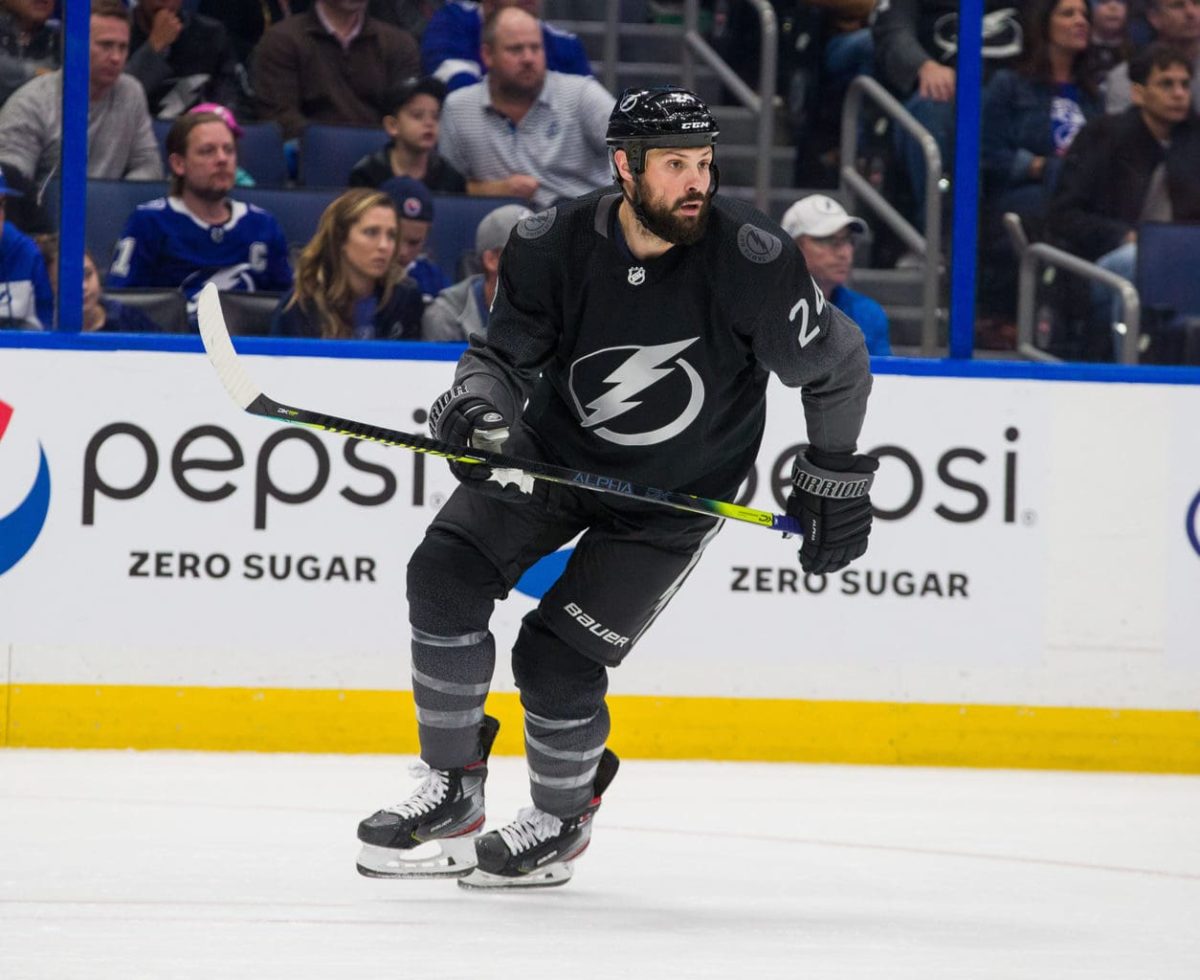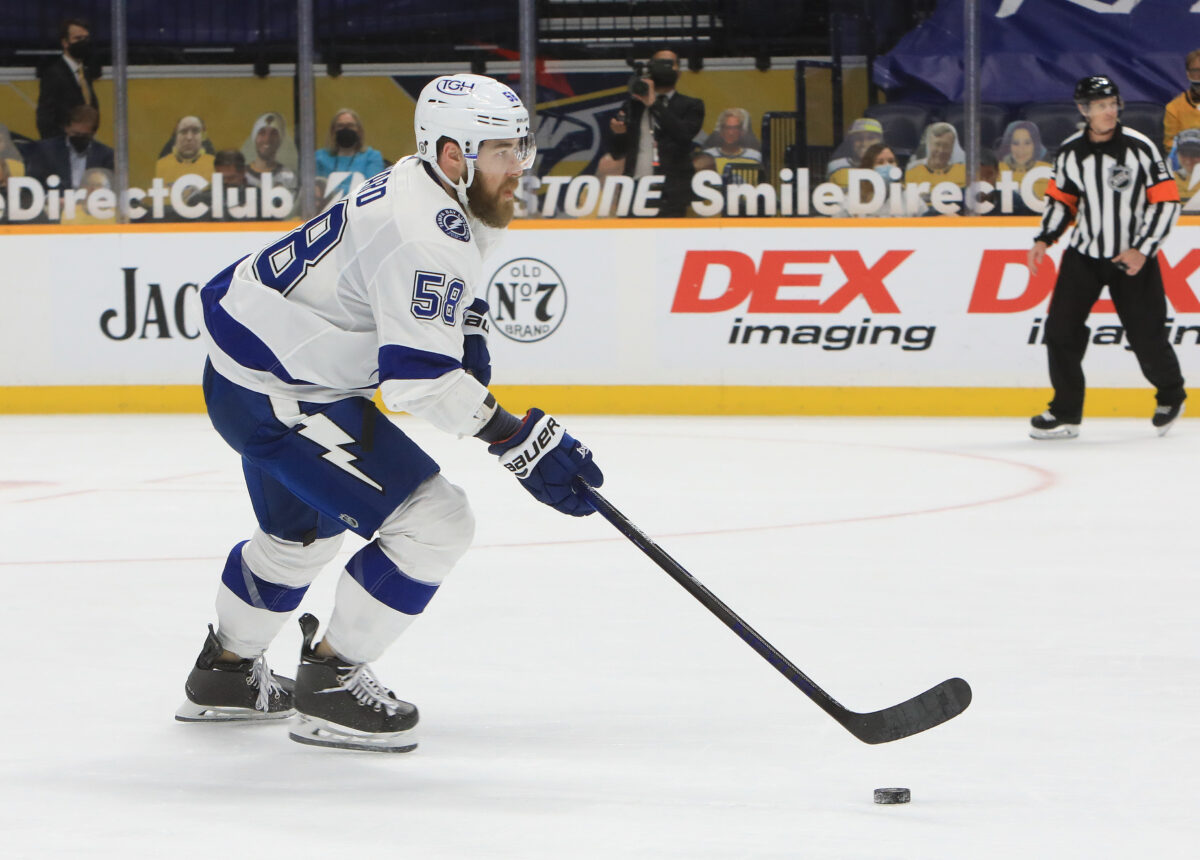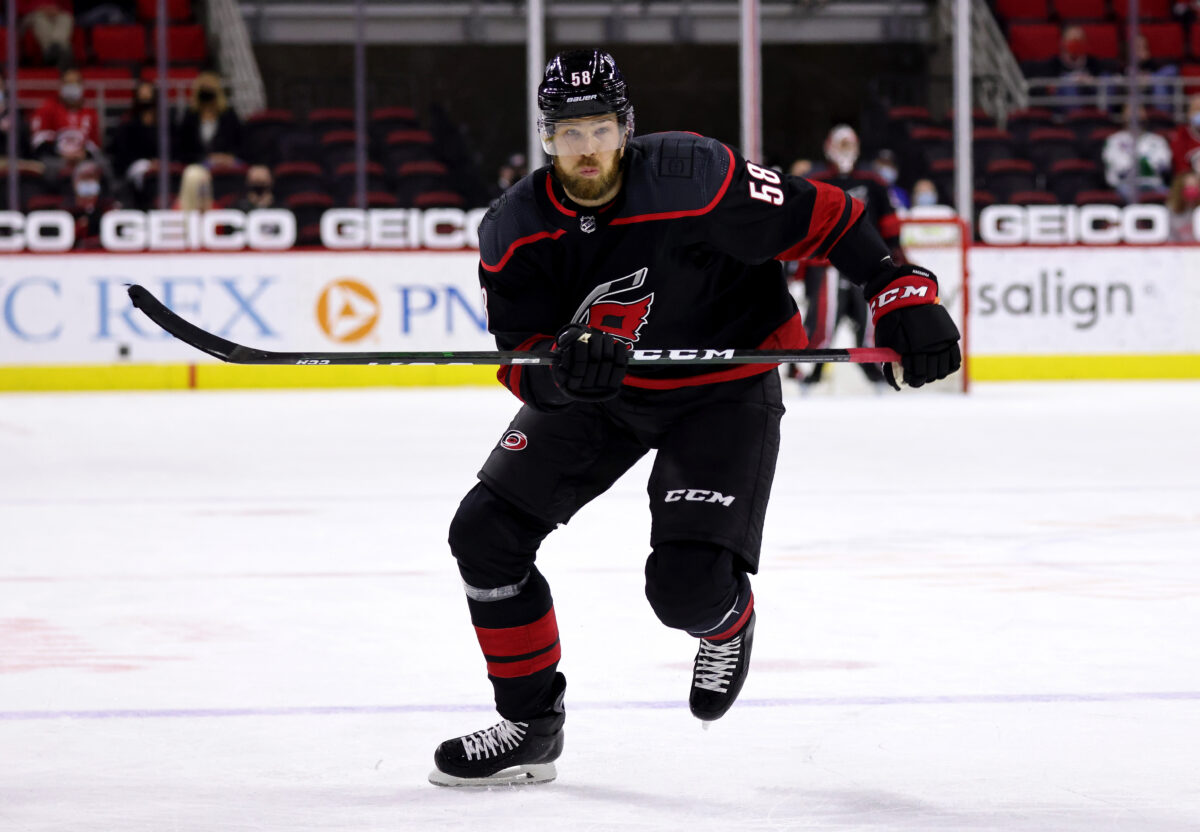One of the Tampa Bay Lightning’s unsung heroes from their run to the 2020 Stanley Cup was defenseman Zach Bogosian. As a player picked up for nothing before the 2020 trade deadline, Bogosian was exactly what the franchise needed to fill out their defensive corps. No, he wasn’t always perfect and he was even scratched a few games, but he also spent time up and down the line-up, sometimes taking on 20-plus minutes alongside Victor Hedman on the first pairing, or acting as a role-player on the bottom pair.
Heading into the 2021 trade deadline, it was clear that the Lightning wanted to find another Bogosian to fill in their defense. The team lacked experienced depth on the right side, after all, meaning that one injury could have been fatal to their entire defensive corps.

This led general manager Julien BriseBois to swing for the fences for a second straight deadline, pulling off a multi-team deal in order to bring veteran defenseman David Savard to Tampa Bay. While the deal was complicated, the reasoning behind it was simple, Savard was the best defenseman available that the team could squeeze under the cap (with some finagling, of course).
However, now that the Lightning are deep into a playoff run, we can start to ask the all-important question… has Savard been worth the price of admission?
Savard’s Play Has Been Simply Whelming
When you make a mid-season addition, you are hoping to bring in a player that will have an impact during the playoffs, even if it is only for a few games each series. For example, Bogosian set up a handful of key goals for Tampa Bay, as he used his size and ability to make a play that the Lightning’s forwards were able to cash in on.
While no one was expecting Savard to go out and drive the offense, he has yet to score a point in the playoffs. This isn’t necessarily an issue for the type of player he is, but he also hasn’t been particularly noticeable off the scoresheet as well. For example, his advanced stats have been pretty rough, with both his Corsi and Fenwick for sitting around 42 percent.

These statistics don’t necessarily showcase what he can bring each night, but they do paint a picture of a player who isn’t making a real impact on the ice. So far, Savard has been a solid option as a bottom-six defenseman, but nothing he has done has been particularly notable.
Lightning May Have Overthought the Deadline
Once again, it is important to reiterate that Savard hasn’t been a bad defenseman for Tampa Bay. If he can stay healthy and play a steady game each night, there will be no real complaints from Lightning fans. The only real issue is the fact that the team gave up so much for him, especially when compared to other options available at the trade deadline.
Even if it is still impressive that BriseBois managed to manipulate the cap enough to swing the trade, he did so by giving up a lot of draft capital. If Savard had come into the line-up and been a healthy defenseman playing 20 minutes each night in the top-four, then that capital would have been well spent.
Due to the new system and what appears to be a nagging injury, this hasn’t happened. Instead, Savard has been taking on time on the third-pairing, playing a more limited role with the team. With this, he is looking more like a player that should have been a smaller addition at the deadline.
You only have to look at the Carolina Hurricanes to see an example of the kind of player the Lightning could have acquired to fill this role. At the deadline, the Hurricanes acquired Jani Hakanpaa and a sixth-round pick from the Anaheim Ducks for embattled defensive prospect Hayden Fleury. While this wasn’t a small player to give up in a trade, Fleury was no longer in the team’s future plans, and Hakanpaa immediately filled the need for a tough bottom-pairing defenseman that every team wants to have on their roster.

Throughout the postseason, Hakanpaa played all 11 games for the Hurricanes, averaging about 17 minutes of ice time each night. While he didn’t score a point for the team, he led them in hits (49) and was tied for third in blocked shots with 14. By comparison, Savard has 25 hits in eight games, with just six blocked shots.
Once again, this isn’t saying that Savard was the wrong player to acquire, but that the cost was likely more than the Lightning needed to pay for his addition. Remember, in order for Tampa Bay to get his contract under the cap, they had to trade a first and third-round pick to Columbus so they would trade him while retaining half of his salary, then had to move a fourth-rounder to the Detroit Red Wings so they would retain more of the cap hit.
By contrast, due to his $750,000 contract, Hakanpaa would have fit under Tampa Bay’s cap, allowing them to only send a draft pick or prospect to Anaheim without the need for other teams to take on a portion of his contract. This would have brought a player with a similar potential to the Lightning without giving up other futures to make the move happen.
Lightning Weren’t Looking Towards the Expansion Draft
This matters for the Lightning this offseason due to the impending Seattle Kraken expansion draft. By trading out so many draft picks over the last two seasons, the franchise is lacking the tools needed to easily influence the Kraken’s selection. Now we can assume that BriseBois was taking this into account when he made this trade, but it still may create a potential headache if they had hoped to shed an undesirable contract.
Related: Top 5 Lightning Through the First 10 Postseason Games
The good news for the Lightning is that his trade has been far from a negative for the franchise. While he hasn’t made a huge impact on the ice, Savard has still been a useful defensive piece to roll out in the bottom six. Given the fact that they are making their way to the Conference Finals once again, he will have more opportunities to showcase why BriseBois made this big move for him at the deadline.